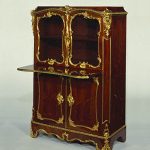We may receive a commission when you use our affiliate links. However, this does not impact our recommendations.
Clean Rusty Tools by Electrolysis
Electrolysis is a gentle, safe way to chemically remove
all the rust from small tools, and it leaves the iron untouched. An abrasive can remove rust,
too, but it may require removing a large amount of metal, either
weakening the piece or destroying its value. Here’s what you need: A
small battery charger, a plastic or glass container, washing soda
(available in the laundry-detergent aisle at grocery stores), scrap
iron, a charging clip and a couple feet of wire. Here’s how it works:
Follow the setup in Photo 1. The tool gets a negative charge and the
scrap iron gets a positive charge.
1. Electrolysis is not a complex operation. Mix one tablespoon of
washing soda in one gallon of water. Pour this solution over the tool
until it is covered. Hook the charger’s black negative clip to the tool
using a length of 12-gauge wire and a charging clip. This keeps your
charger lead out of the soup. The red clip must be hooked to a portion
of scrap-iron rod that is out of the water, because it would be eaten
away in the water. Wooden blocks suspend the tool so the bottom gets
cleaned as well.
The rust flees from the negatively charged tool and is attracted to
the positively charged scrap iron. The cleaning action occurs only in a
line-of-sight manner, so it’s best if the scrap iron surrounds the
tool. When you’ve wired the tool and scrap-iron rod, plug in the
charger. The lowest setting is all you need. Bubbles mean it’s working
(Photo 2). Eventually, a reddish brown crud will appear on the water’s
surface (Photo 3). When bubbles no longer form on the tool, you’re
done. Clean the tool with water and a gray 3M finishing pad. Treat your
restored tool to a coat of rust-inhibiting wax or spray.
Safety Considerations: Electricity and water can be dangerous. Keep the charger away from the water in case of an accidental spill. Unplug the charger prior to placing your hands in the water.
Here are some supplies and tools we find essential in our everyday work around the shop. We may receive a commission from sales referred by our links; however, we have carefully selected these products for their usefulness and quality.












